
The Event
The Eucharistic Miracle of Lanciano happened in the eight century. This is inferred by circumstances and historical concomitance due to the persecution in the East from the Emperor Lion III, called The Isaurico, who started a strong persecution against Church and cult of sacred images. Just to escape this persecution a lot f Greek monks fled to Italy, among these were Basilians monks, disciples of Saint Basil (329 – 379) Cesarea’s Bishop of Cappadocia (today Turkey). Some of those communities fled to Lanciano.
One day a monk during celebration of Mass had a doubt about the real presence of Jesus in the Host. Pronounced words of bread and wine consecration, suddenly, monk saw bread turn in to Flesh, and the wine in Blood.
Tradition unfortunately hasn’t given us registry data of the monk-priest whose hands are verified the extraordinary and unexpected change. We know that he was an oriental customary monk, Greek, belonging to the great spiritual family of Basilians. A document of 1631, that reports Miracle with accuracy, paints the anonymous protagonist not firm in the faith, expert of the world sciences but ignorant about God; he doubted day by day, if in the consecrated Host there was the true body of Christ and so in the wine the true blood”. He was a man tormented by doubt, disorientated by the various tides of opinion, also in the field of faith, lacerated by the daily restlessness
What was the reaction in front of unexpected change? According a document:
“From so much and so stupendous miracle the monk was petrified and confused, he was transported, for a long, by a divine ecstasy, when finally the fear surrendered to the spiritual happy, that filled his soul, with an happy face and eyes full of tears, he turned toward faithful and said: ‘Or happy assistants to which God to confuse my incredulity has wanted to reveal in this holy Sacrament and to become visible to your eyes. Come here, brothers, and contemplate our God done next to us”. It is the common feeling that is accompanied to each experience of God and his mysterious to act with children’s men. The bread and the wine, invested, by the creative strength and sanctifier of he Word, are suddenly changed, totally and visibly in Flesh and Blood.
Dating
We have no element that allow us to date the day, the month or the exact year in which Miracle happened. The late voice of historical testimony of oral tradition testimony together frame the Event inside the Eight century, without other precise statements.
The History of that Century help us. We know with certainty that in the East, under the Emperor Lion III, there was a strong iconoclast fight against the cult of sacred images, that was held legitimate and theologically unexceptionable by Roman Church. It was a painful story that increased the migratory flow of Greek monks to Italy, among these a little community fled to Lanciano.
According to this general picture of reference, we can hold in founded way that the Miracle was happened between 730 and 750 a.C.
The documentary confirmation
To put aside from the positive results of the scientific search, who want know the history and the cult of Relics of the Eucharistic Miracle, has available information disseminated in the time; nevertheless it should not surprise anybody the shortage of the documentary material on an event that goes up again to the 700 a. C. Unfortunately and not only from files but also from other sources it results to ascertain the inconsiderate disappearance of documents and the irresponsible destruction of parchments happened in Lanciano and elsewhere. Overall, it can be attribute both to precarious political and social conditions verified on vast staircase, above all around thousand, both to other causes: to the shortage of the means of written (almost all submitted to oral tradition or to the indefatigable work of few amanuenses) we add fires and the devouring lootings, the frequent wars and the inevitable earthquakes, the human carelessness and the indifferent use of the parchments as cover of volumes as cups for the oil illumination or common paper to wind various commodity.
The first written document is of 1631 and narrate accurately what happened to the monk. Near sanctuary’s presbytery, on the right side of Valsecca Chapel, we can read the epigraph dated 1636, that narrates in synthesis the happened event.
We can add in this section also the different Miracle Recognition. These are historical and juridical verifications that affirm during centuries the Miracle authenticity by ecclesiastical Authority.
The first Recognition happened in 1574 from Archbishop Gaspare Rodriguez, who ascertained that the total weight of five clots of blood was the same weight of each of them. This extraordinary event wasn’t subsequently verified. The actual total clots weight is grams16,505, that of each of them is grams 8; grams 2,45; grams 2,85; grams 2,05 and grams 1,15. Is necessary to add milligram 5 of blood powder. Different documents attest from the beginning of sixteenth century, the variation made to the “relics” and the tradition to bring them in procession during moments of serious and urgent necessity. Further recognitions happened in 1637, 1770, 1866, 1970.
Location
We are in the “beautiful country”, Italy, in Abruzzi, province of Chieti, Lanciano City. Near the central Plebiscito square, in the earth of the historical center it was open to the public a little church devoted to Saint Legonziano, submitted from the senate and people of Lanciano to a modest nucleus of Basilians monks landed in the chief town they brake as fugitives. The Eucharistic Miracle was verified in such temple and among the hands of one of these oriental monks. Recent archeological searches affirm the Byzantines presence in this area in that time. Archeologists have recovered decorated ceramic finds to gangs typical of the Byzantine age. According to the Archeologist Andrea Staffa: “Exactly below the actual altar of the Sanctuary (of the San Francis Church) has been underlined a classroom in masonry, made of you tan quadrangular of stone, perhaps referable to the native plan of the place”.
Miracle Relics were guarded in the original church until 1258, then they passed to Benedicts (c. 1074) and, after a little pastors parenthesys (1229 – 1252) the passed definitely to the Franciscans. The proximity of the flourishing monastery of Saint John in Venus (to the outskirts), monastery today submitted Passionists Fathers, in coincidence with the sunset of the Byzantine presence it favored the installation of the Benedictines in the church of Saint Legonziano, note among the years 1047 and 1076. The Benedictine monastery started to live and to know its descending parable from 1225, after inside factors and behaviors anti-empire that decreed the expulsion from Lanciano during 1229. And it was so that the Miracle’s Church was submitted to the local clergy to the archbishop up to the arrival of the Franciscans (April 3rd 1252). In 1258 Franciscans monks building again that church and they dedicated it to St Francis. These religious people, to them it turns, owed leave the place in 1809, when Napoleon I suppressed the religious orders.
They got back their ancient convent only in June 1953. Relics, locked in a reliquary of ivory, were first kept in the church of Saint Legonziano, then in the St Francis. At the time of the raids of the Turks in the Abruzzi, a minor monk named Giovanni Antonio of Mastro Renzo, wanted save them and, August 1st 1566, came bring them with him. But, after walking all night, found the next morning, still on the outskirts of Lanciano. He realized then that he and his companions were to remain to preserve the relics. These, once past the danger, were placed on an altar worthy of them, on the right side of the nave of the church. They were closed in a crystal vase, deposed in a wooden cupboard, closed with four keys. In 1920, Relics were placed behind the new great altar. Since 1923, the “flesh” is set in the spokes of monstrance, while clots of dried blood contained in a sort of crystal cup at the foot of the monstrance.
Scientific Test
In November of 1970, for instances of Lanciano’s Archbishop, Monsignor Perantoni, and the Provincial minister of the Conventual of Abruzzi, and with the consent of Rome, the Franciscans of Lanciano decided to submit to scientific examination of these “relics” date back 12 centuries. it was certainly a challenge : but neither the Catholic faith (which here was not at stake), nor a historical tradition, some have nothing to fear from science because each remains in its field.
The task was entrusted to Dr. Edward Linoli, head of the hospital in Arezzo, and professor of anatomy, histology, chemistry and clinical microscopy, with the assistance of Prof. Ruggero Bertelli University of Siena. Doctor Linoli carries out withdrawals on sacred relics, November 18, 1970, then performed the analysis in the laboratory. On March 4th 1971, professor presented a detailed account of the various studies done. Here are the main conclusions:
1. The “Flesh” is truly miraculous flesh constituted by striated muscle tissue of the myocardium.
2. The “Holy blood” is real blood: chromatographic analysis is demonstrated with absolute certainty and unquestionable.
3. The immunological study shows that flesh and blood are certainty of Human nature and the Immuno-hematological proof allow to affirm objectively and certainty that both belong to the same blood type AB. This identity of blood group can indicate the membership of the flesh and blood to the same person, however with the possibility of belonging to two different individuals of the same blood group.
4. The proteins in the blood are usually shared, with the same percentage of serum protein pattern of normal fresh blood.
5. Histological section showed no sign of infiltrations of salts or substances used in ancient conservative order of mummification. Certainly, the preservation of proteins and minerals observed in the flesh and blood of Lanciano is neither impossible nor exceptional: the repeated analysis allowed to find proteins in Egyptian mummies of 5,000 for 4 years But it should be noted that the case of a mummified body in line with procedures known, is very different from that of a fragment,of infarction left in its natural state for centuries, exposed to the atmospheric, physical and biochemistry agents.
Professor Linoli also rules out the possibility of a wrong done in centuries past: “In fact, he says, assuming that a person has picked the heart of a corpse, I affirm that only an experienced hand in anatomical dissection could have obtained a “cut” of a uniform hollow viscera (as we can still glimpse the “flesh”) and tangential to the surface of this organ, as suggested by the course predominantly longitudinal bundles of muscles fibers, visible, in several points in histological preparations. Also, if blood had been taken from a corpse, would rapidly altered to deliquescence or putrefaction”
New Scientific Exam
 Relation of Professor Linoli was published Sclavo Papers in Diagnostic, 1971, issue 3 (Meini Graphic, Siena) and aroused a great interest in scientific world. Also in 1973, the Board of Governors of the World Health Organization, WHO / UN appointed a scientific commission to verify, by controls experiment, the conclusions of the Italian Doctor. Jobs lasted 15 months with a total of 500exams. Searches were the same as those made by prof. Linoli, with other additions. The conclusion of all the reactions and of all the searchers confirmed what had already declared and published in Italy.
Relation of Professor Linoli was published Sclavo Papers in Diagnostic, 1971, issue 3 (Meini Graphic, Siena) and aroused a great interest in scientific world. Also in 1973, the Board of Governors of the World Health Organization, WHO / UN appointed a scientific commission to verify, by controls experiment, the conclusions of the Italian Doctor. Jobs lasted 15 months with a total of 500exams. Searches were the same as those made by prof. Linoli, with other additions. The conclusion of all the reactions and of all the searchers confirmed what had already declared and published in Italy.
Precisely, it was stated that the fragments taken in Lanciano could not be assimilated by tissues mummifies. Their preservation after almost twelve centuries, relics of glass and no preservatives, antiseptic, antifermentative and mummifying, not scientifically explainable: in fact the vases that contain these relics do not prevent access of air and light nor the entry of parasites of order plant or animal pests, ordinary vehicles of the atmospheric air. About the nature of the piece of flesh, the Board declared without doubt that it is a living tissue that responds quickly to all their clinical reactions of living beings.
This response therefore it fully confirms the conclusions of the Prof. Linoli. And it doesn’t surprise to ascertain that an Italian miracle of middle age has actually interested until this point l’OMS and ONU! But, this is an other surprise, the extract – summary of scientific jobs of Medical Commission of WHO and UN, published in December 1976 in New York and Geneva, states in its conclusion that science, aware of its limits, stops in front of impossibility of giving an explanation. The last paragraph is certainly not a statement of religious faith, but it is at least the apology of humility that should have one who devotes himself to the scientific research. The scientist, during his investigations has to remember that he is just a man on world.



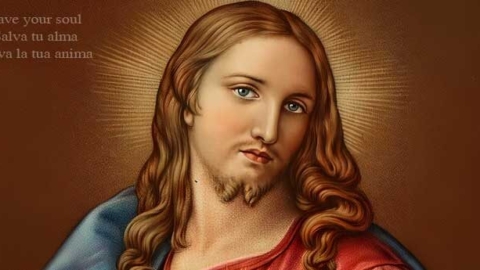









 "Heavenly Father, today, I surrender to You my heart. Help me to be Your instrument in the world. Cover me with the Precious Blood of Your Divine Son. Guard me against all evil. Protect me from any evil plan Satan may have for me today. Clothe me in Your Divine Will. Amen"
"Heavenly Father, today, I surrender to You my heart. Help me to be Your instrument in the world. Cover me with the Precious Blood of Your Divine Son. Guard me against all evil. Protect me from any evil plan Satan may have for me today. Clothe me in Your Divine Will. Amen" "Oh Jesus of Divine Mercy, hear my pleadings to you, for I am here to do your Will!"
"Oh Jesus of Divine Mercy, hear my pleadings to you, for I am here to do your Will!"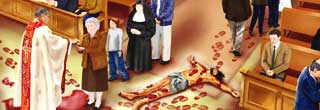
 "I place myself in the presence of the Most Holy Trinity (Father, Son, and Holy Spirit) and by the power of the Blood of Our Lord Jesus Christ, I break, undo, trample, annihilate, render ineffective, and erase from my physical, psychic, biological, and spiritual being every curse that has been placed on me, on my family and family tree, on any person, family member, or ancestor through acts of occultism or spiritism. By the power of the Precious Blood of Our Lord Jesus Christ and through the intercession of the Blessed Virgin Mary, St. Michael, St. Gabriel, and St. Raphael, I break and render ineffective every curse, whatever its nature, in the Name of our Lord Jesus Christ. Amen (Repeat the prayer 3 times)"
"I place myself in the presence of the Most Holy Trinity (Father, Son, and Holy Spirit) and by the power of the Blood of Our Lord Jesus Christ, I break, undo, trample, annihilate, render ineffective, and erase from my physical, psychic, biological, and spiritual being every curse that has been placed on me, on my family and family tree, on any person, family member, or ancestor through acts of occultism or spiritism. By the power of the Precious Blood of Our Lord Jesus Christ and through the intercession of the Blessed Virgin Mary, St. Michael, St. Gabriel, and St. Raphael, I break and render ineffective every curse, whatever its nature, in the Name of our Lord Jesus Christ. Amen (Repeat the prayer 3 times)"  "O glorious St. Joseph! by your profound humility, by your unalterable meekness, by your invincible patience, by your angelic purity and perfect fidelity that made you a timely imitator of the virtues of Jesus and Mary, I ask you to console me in all my sorrows, to guide me in all my doubts, to defend me in all temptations, to deliver me from all spiritual and material dangers; to extend your arm against all my visible and invisible enemies, breaking and destroying all the snares and barriers that they tend and arm against me. Amen."
"O glorious St. Joseph! by your profound humility, by your unalterable meekness, by your invincible patience, by your angelic purity and perfect fidelity that made you a timely imitator of the virtues of Jesus and Mary, I ask you to console me in all my sorrows, to guide me in all my doubts, to defend me in all temptations, to deliver me from all spiritual and material dangers; to extend your arm against all my visible and invisible enemies, breaking and destroying all the snares and barriers that they tend and arm against me. Amen."  "Oh, blessed Saint Michael, protect us from the attacks and snares of the evil spirits because you know full well that we are poor mortals, fragile and weak, in need of the Mercy of God and of your protection to fulfill the mission that Heaven has commissioned to us. Oh, Saint Michael, may your victorious cry: “who is like God? no one is like God”, suppress and cast into Hell satan and all the evil spirits who prowl about the world seeking the destruction of souls. Amen"
"Oh, blessed Saint Michael, protect us from the attacks and snares of the evil spirits because you know full well that we are poor mortals, fragile and weak, in need of the Mercy of God and of your protection to fulfill the mission that Heaven has commissioned to us. Oh, Saint Michael, may your victorious cry: “who is like God? no one is like God”, suppress and cast into Hell satan and all the evil spirits who prowl about the world seeking the destruction of souls. Amen"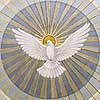 Come, Holy Spirit, send to us from Heaven a ray of your light. Come, Father of the poor, come, giver of gifts, come, light of hearts. Perfect comforter, sweet guest of the soul, sweetest relief. In toil, rest, in heat, shelter, in weeping comfort. O most blessed light, invade into the depths the hearts of your faithful. Without your strength nothing is in man, nothing is without fault. Wash what is sordid, bathe what is parched, heal what bleeds. Bend that which is stiff, warm that which is icy, straighten that which is astray. Give to your faithful who trust in you alone your Holy Gifts. Give virtue and reward, give holy death, give eternal joy. Amen.
Come, Holy Spirit, send to us from Heaven a ray of your light. Come, Father of the poor, come, giver of gifts, come, light of hearts. Perfect comforter, sweet guest of the soul, sweetest relief. In toil, rest, in heat, shelter, in weeping comfort. O most blessed light, invade into the depths the hearts of your faithful. Without your strength nothing is in man, nothing is without fault. Wash what is sordid, bathe what is parched, heal what bleeds. Bend that which is stiff, warm that which is icy, straighten that which is astray. Give to your faithful who trust in you alone your Holy Gifts. Give virtue and reward, give holy death, give eternal joy. Amen.
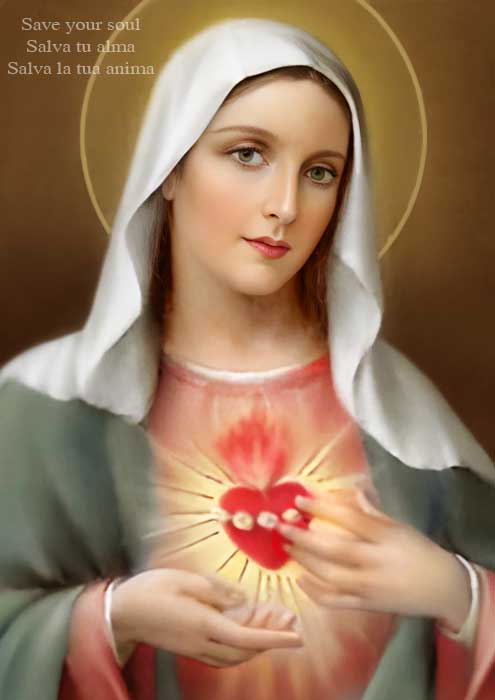
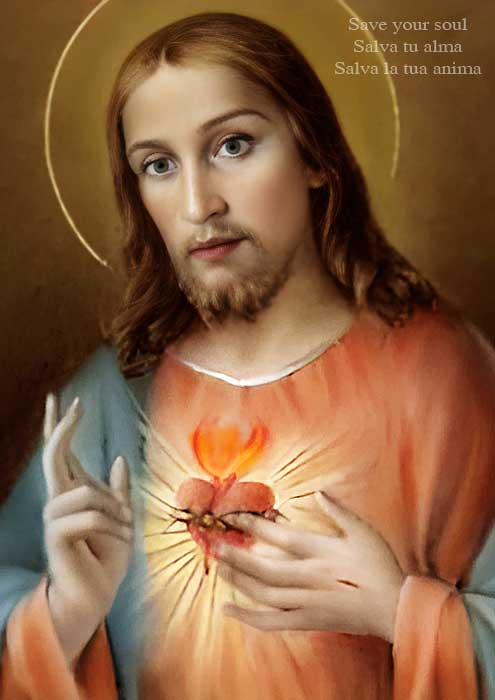
 "O Hearts of Jesus and Mary; I consecrate myself, I consecrate my family and the whole world, to your Most Beloved Hearts. Listen to the supplication which I making to you and accept our hearts in Yours, to be delivered and protected we, the whole world, from all evil and all sin. May the protection of your Two Hearts be refuge, strength, and protection, in the daily spiritual struggles. That the power of your Two Hearts irradiates the world so that it is protected from evil and sin. We willingly consecrate ourselves and consecrate all mankind to your Hearts; sure and confident, for your Great Mercy, to obtain the victory over the forces of evil in this world, and the eternal Glory in the Kingdom of God. Amen"
"O Hearts of Jesus and Mary; I consecrate myself, I consecrate my family and the whole world, to your Most Beloved Hearts. Listen to the supplication which I making to you and accept our hearts in Yours, to be delivered and protected we, the whole world, from all evil and all sin. May the protection of your Two Hearts be refuge, strength, and protection, in the daily spiritual struggles. That the power of your Two Hearts irradiates the world so that it is protected from evil and sin. We willingly consecrate ourselves and consecrate all mankind to your Hearts; sure and confident, for your Great Mercy, to obtain the victory over the forces of evil in this world, and the eternal Glory in the Kingdom of God. Amen"